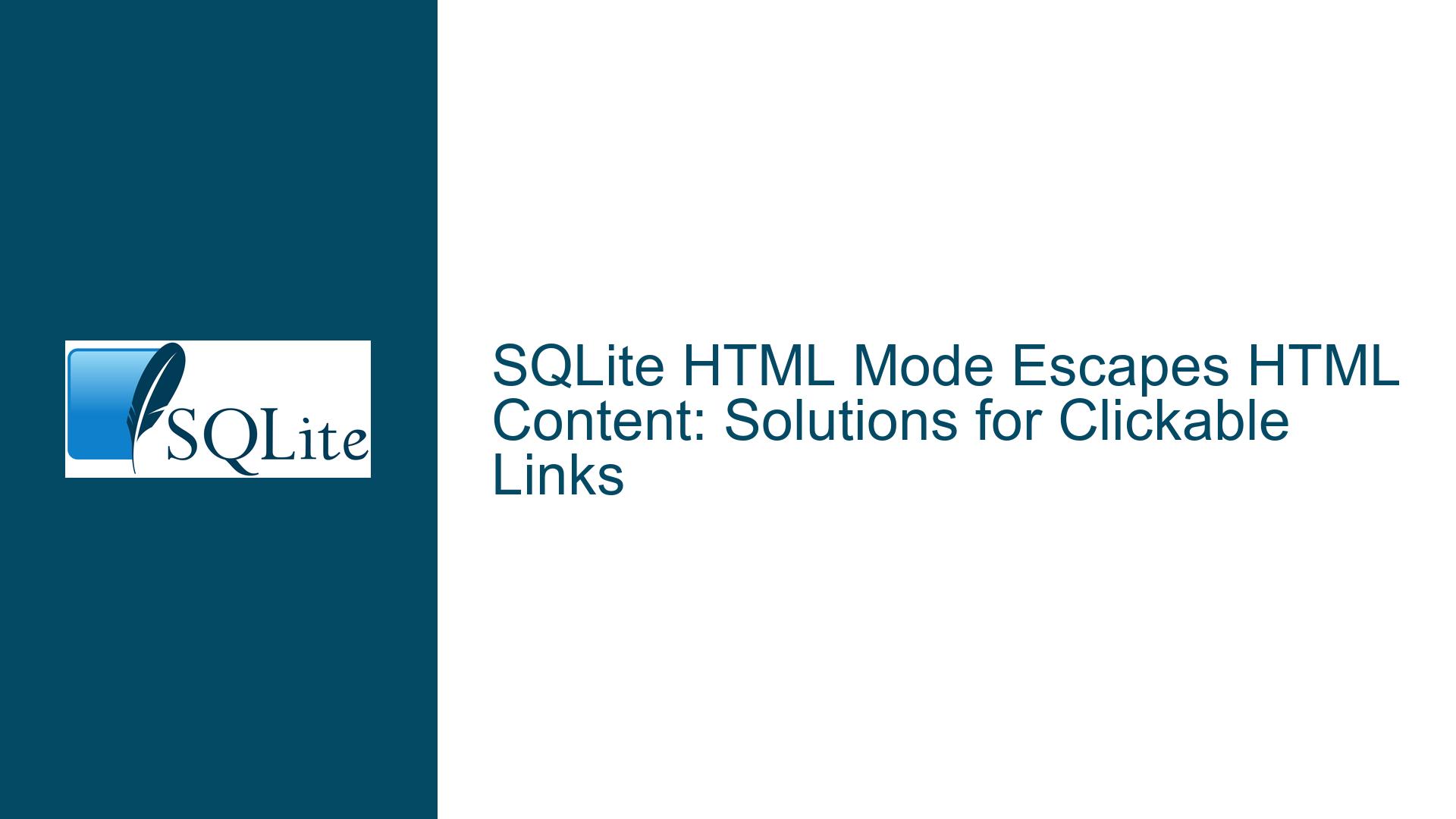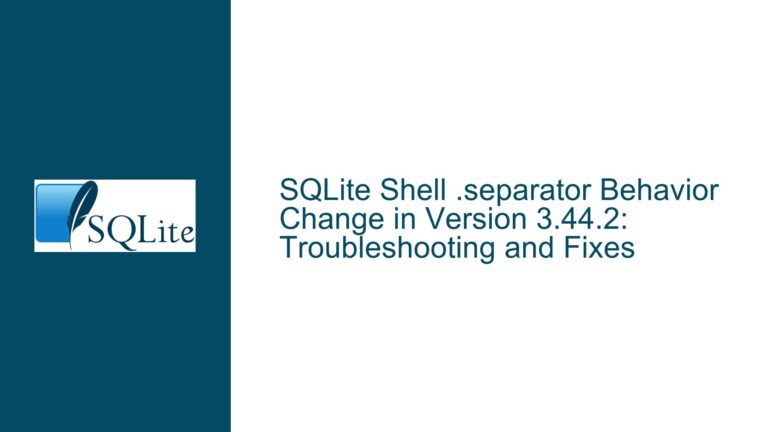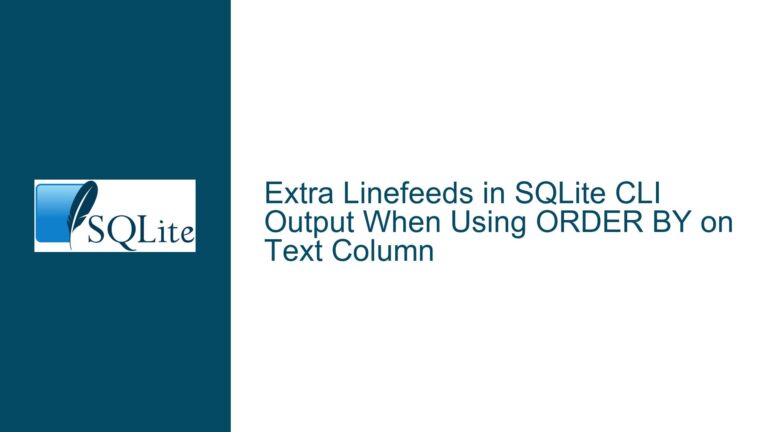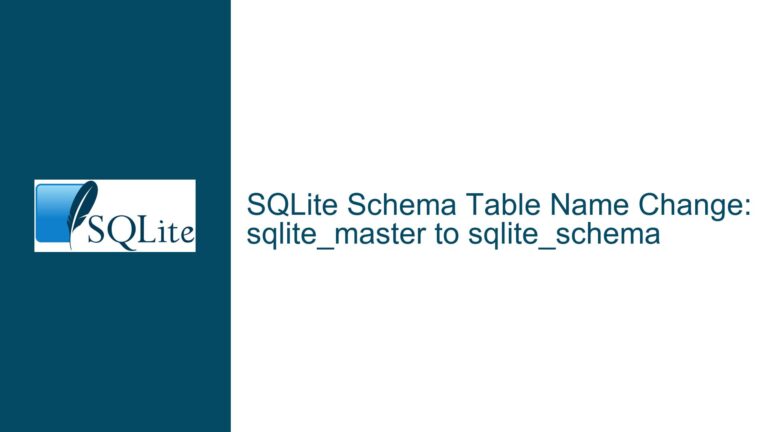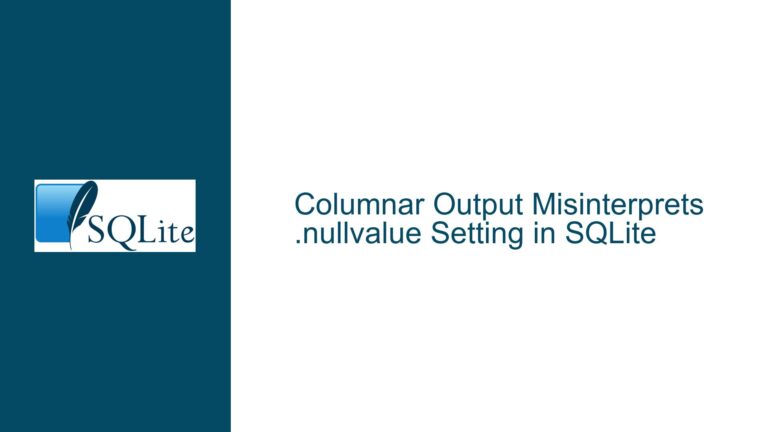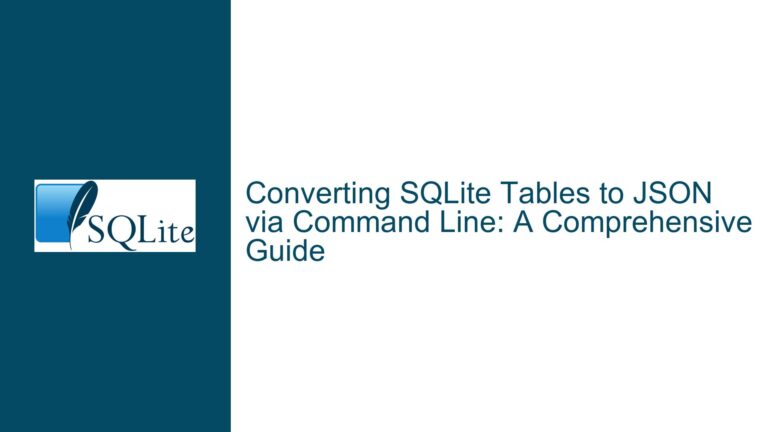SQLite HTML Mode Escapes HTML Content: Solutions for Clickable Links
HTML Content Escaping in SQLite’s .mode html
When working with SQLite, particularly in the context of generating HTML output, users often encounter a specific issue where HTML content stored in a database column is escaped when using the .mode html command. This escaping behavior is intentional, as SQLite’s HTML mode is designed to ensure that any content retrieved from the database is safely rendered in an HTML context. However, this can be problematic when the content itself is intended to be HTML, such as a clickable link like <a href="http://www.example.com">http://www.example.com</a>. In such cases, the HTML tags are escaped, rendering the link as plain text rather than a clickable hyperlink.
The core of the issue lies in the design philosophy of SQLite’s .mode html. This mode is not intended to pass through raw HTML content but rather to ensure that any database content is safely embedded within an HTML document. This means that characters like <, >, and & are converted to their corresponding HTML entities (<, >, and &), which prevents the browser from interpreting them as HTML tags. While this is generally a good practice for security and data integrity, it becomes a hindrance when the database content itself is meant to be HTML.
Interplay Between SQLite’s HTML Mode and Raw HTML Content
The primary cause of this issue is the inherent conflict between SQLite’s HTML mode and the need to preserve raw HTML content. SQLite’s HTML mode is designed to sanitize output, ensuring that any data retrieved from the database is safe to embed in an HTML document. This is particularly important when dealing with user-generated content, where malicious HTML or JavaScript could potentially be injected into the database. By escaping HTML characters, SQLite prevents such injection attacks, ensuring that the output is safe to render in a web browser.
However, this design choice becomes a limitation when the database content itself is intended to be HTML. For example, if a column in a table contains a pre-formatted HTML link, the .mode html command will escape the HTML tags, rendering the link as plain text. This behavior is not a bug but rather a feature of SQLite’s HTML mode, which prioritizes security and data integrity over the preservation of raw HTML content.
Another contributing factor is the lack of a built-in mechanism in SQLite to differentiate between content that should be escaped and content that should be passed through as raw HTML. Unlike some other database systems or programming languages that offer more granular control over output escaping, SQLite’s HTML mode applies a one-size-fits-all approach, escaping all HTML characters regardless of the context.
Custom HTML Generation and Alternative Modes in SQLite
To address the issue of HTML content escaping in SQLite, users can employ several strategies that bypass the limitations of .mode html while still achieving the desired output. One effective approach is to use SQLite’s .mode list command, which outputs data in a simple, unformatted list. This mode does not perform any HTML escaping, allowing users to manually construct HTML markup around the database content.
For example, consider a table named myTable with a column ln that contains plain text URLs. To convert these URLs into clickable links, users can execute an SQL UPDATE statement that wraps the URLs in HTML anchor tags:
UPDATE myTable SET ln = '<a href="' || ln || '">' || ln || '</a><br />' WHERE ln LIKE 'http%';
This statement constructs an HTML link for each URL in the ln column, appending a <br /> tag for formatting. The resulting content can then be output using .mode list, which preserves the raw HTML markup:
.mode list
SELECT * FROM myTable;
By manually constructing the HTML markup within the SQL query, users can bypass the escaping behavior of .mode html and generate the desired output. This approach requires some additional effort but provides full control over the HTML content, ensuring that links are rendered correctly.
Another alternative is to use SQLite’s .print meta-command to output custom HTML markup around the database content. This method is particularly useful when generating an entire HTML document from within the SQLite shell. For example, users can output the HTML header and footer using .print, and then use .mode list to output the database content in between:
.print '<html><body><table>'
.mode list
SELECT * FROM myTable;
.print '</table></body></html>'
This approach allows users to generate a complete HTML document with custom markup, while still preserving the raw HTML content stored in the database. It is a flexible solution that can be adapted to various use cases, from simple link generation to complex HTML reports.
For users who require more advanced HTML generation capabilities, integrating SQLite with an external scripting language such as Python, Perl, or PHP is often the best solution. These languages offer powerful libraries for HTML generation and manipulation, allowing users to retrieve data from SQLite and format it as needed. For example, a Python script could use the sqlite3 module to query the database and the html module to generate the desired HTML output:
import sqlite3
from html import escape
conn = sqlite3.connect('myDatabase.db')
cursor = conn.cursor()
cursor.execute('SELECT ln FROM myTable WHERE ln LIKE "http%"')
rows = cursor.fetchall()
print('<html><body><table>')
for row in rows:
print(f'<tr><td><a href="{escape(row[0])}">{escape(row[0])}</a></td></tr>')
print('</table></body></html>')
conn.close()
This script retrieves URLs from the myTable table, escapes any potentially dangerous characters using the html.escape function, and generates a complete HTML document with clickable links. By leveraging the capabilities of an external scripting language, users can achieve a level of flexibility and control that is not possible within the SQLite shell alone.
In conclusion, while SQLite’s .mode html command is not suitable for preserving raw HTML content, users can achieve the desired output by employing alternative modes, custom SQL queries, or external scripting. These solutions provide the necessary flexibility to generate clickable links and other HTML content, ensuring that the database output meets the requirements of the application.
